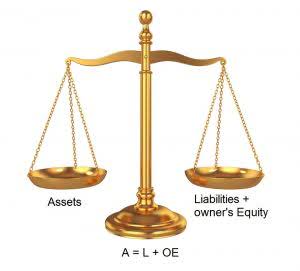
The primary disadvantage of the double-entry accounting system is that it is more complex. It also requires that mathematically, debits and credits always equal each other. This complexity can be time-consuming as well as more costly; however, in the long run, it is more beneficial to a company than single-entry accounting. Accounting software usually produces several different types of financial and accounting reports in addition to the balance sheet, income statement, and statement of cash flows. A commonly used report, called the “trial balance,” lists every account in the general ledger that has any activity. The double entry accounting system is a method for companies of all sizes to accurately record the impact of transactions and keep close track of the movement of cash.
- To balance the accounts, you enter a credit (CR) of $1000 in the “Accounts Payable” account.
- One asset is going out and one asset is coming in—two sides to the transaction.
- A given company can add accounts and tailor them to more specifically reflect the company’s operations, accounting, and reporting needs.
- The basic double-entry accounting structure comes with accounting software packages for businesses.
- For example, when a company receives a loan from a bank, cash is received and an obligation is owed.
The chart below summarizes the differences between single entry and double entry accounting. The chart below summarizes the impact of a debit and credit entry on each type of account. On the general ledger, there must be an offsetting entry for the balance sheet equation (and thus, the accounting ledger) to remain in balance. The debit and credit sides of a ledger should always be equal in double-entry accounting. Double-entry bookkeeping shows all of the money coming in, money going out, and, most importantly, the sources of each transaction.
Common Misconceptions About Double-Entry Accounting
With accurate and easy-to-access financial documents, stakeholders and leadership can stay up to date with the ongoing processes. The debits and credits are tracked in a general ledger, otherwise referred to as the “T-account”, which reduces the chance of errors when tracking transactions. The company gains $30,000 in assets from the machine but loses $5,000 in assets from cash.
Everything on the left side of the equation, the assets, has a debit balance. Everything on the right side of the equation, liabilities and equity, has a credit balance. The basic double-entry accounting structure comes with accounting software packages for businesses. When setting up the software, a company would configure its generic chart of accounts to reflect the actual accounts already in use by the business.
Double-Entry Accounting FAQs
A simpler version of accounting is single entry accounting, which is essentially a cash basis system that is run from a check book. Under this approach, assets and liabilities are not formally tracked, which means that no balance sheet can be constructed. This approach can work well for a small business that cannot afford a full-time bookkeeper. Double-entry accounting is a system of bookkeeping where every financial transaction is recorded in at least two accounts.

First and foremost is that it provides an organization with a complete understanding of its financial profile by noting how a transaction affects both credit and debit accounts. It also makes spotting errors easier, because if debits and credits do not match, then something is wrong. In single-entry accounting, when a business completes a transaction, it records that transaction in only one account.
Deciding if double-entry accounting is right for you
Double-entry bookkeeping was developed in the mercantile period of Europe to help rationalize commercial transactions and make trade more efficient. Some thinkers have argued that double-entry accounting was a key calculative technology responsible for the birth of capitalism. double entry accounting With a double-entry system, credits are offset by debits in a general ledger or T-account. When a company buys a new delivery car, it gives the car dealership cash and receives the car in exchange. One asset is going out and one asset is coming in—two sides to the transaction.
A sub-ledger may be kept for each individual account, which will only represent one-half of the entry. When Lucie purchases the shelving, the Equipment sub-ledger would only show half of the entry, which is the debit to Equipment for $5,000. Using software will also reduce errors and eliminate out-of-balance accounts. This is how you would record your coffee expense in single-entry accounting. A bachelor’s degree in accounting can provide you with the necessary skills to start an entry-level role as an accountant.
A general ledger is the foundation of a system employed by accountants to store and organize financial data used to create the firm’s financial statements. Transactions are posted to individual sub-ledger accounts, as defined by the company’s chart of accounts. Recording multiple transactions that require both credit and debit entries can be time-consuming and lead to mistakes. It is recommended to use an accountant for your business or accounting software to ensure that all transactions are recorded correctly. Credits increase revenue, liabilities and equity accounts, whereas debits increase asset and expense accounts. Debits slot88 are recorded on the left side of the general ledger and credits are recorded on the right.

